'OO' GAUGE LAYOUT CLEY-ON-SEA
Altering one decision can drastically change the outcome of one’s life. Russ Pigott has filled his room with a hypothetical scenario based on one change from 300 years ago.
Words: Chris Gadsby Photography: Chris Nevard Artwork: Andrew Mackintosh
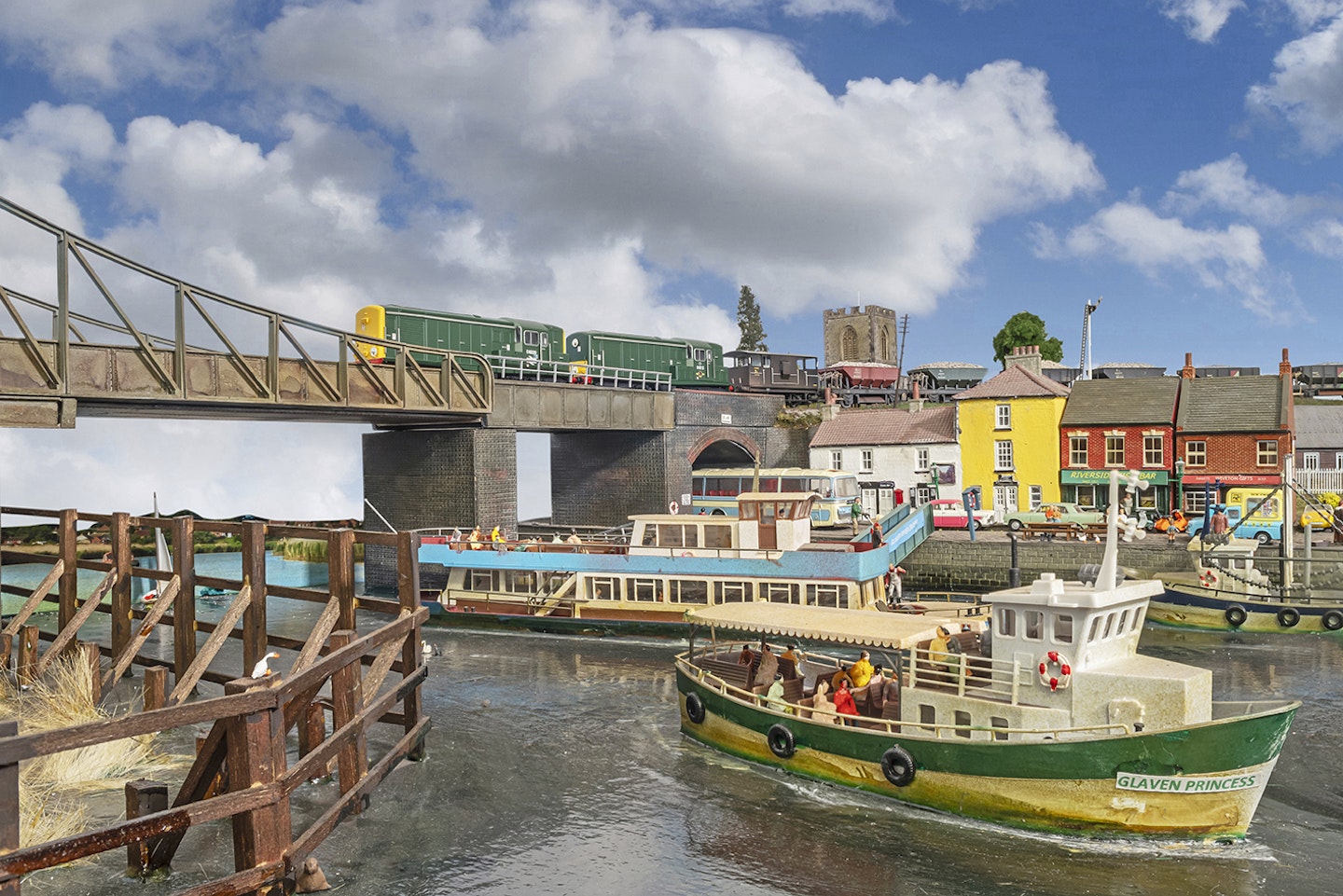
What makes this layout great?
“ It doesn’t matter whether Russ is in the mood for shunting or running long rakes of wagons, there’s something he can do to while away the hours at ‘Cley-on-Sea’. One of the lucky ones with plenty of space to include everything he wanted, it’s no wonder his family lose him for hours at a time! ”
Anybody who has watched plenty of science fiction television or films will be familiar with the laws of causality. For those who aren’t familiar with the term, the premise is that a single decision in the past creates an entirely new timeline and therefore one cannot simply go back in time and change an event expecting everything to be the same. We often think about this in our own lives with the expression ‘I wonder what life would have been like if I hadn’t…’ Fortunately, model railways allow us to play out these hypothetical scenarios without inadvertently changing the course of human events. Russ Pigott has done just that with his enormous room-filler ‘Cley-on-Sea’.
“The port of Cley used to be one of the busiest ports in England before it was silted up in the 1700s. If you look at historical maps you can see how much more water there used to be around the area. My ‘event change’ from the past is that this silting didn’t happen, and that Cley continued to grow and become a busy holiday destination like Great Yarmouth with a thriving railway. In real life I’m quite pleased that Cley-next-the-Sea remains a quiet little village, with the hustle and bustle confined to my dedicated railway room.”
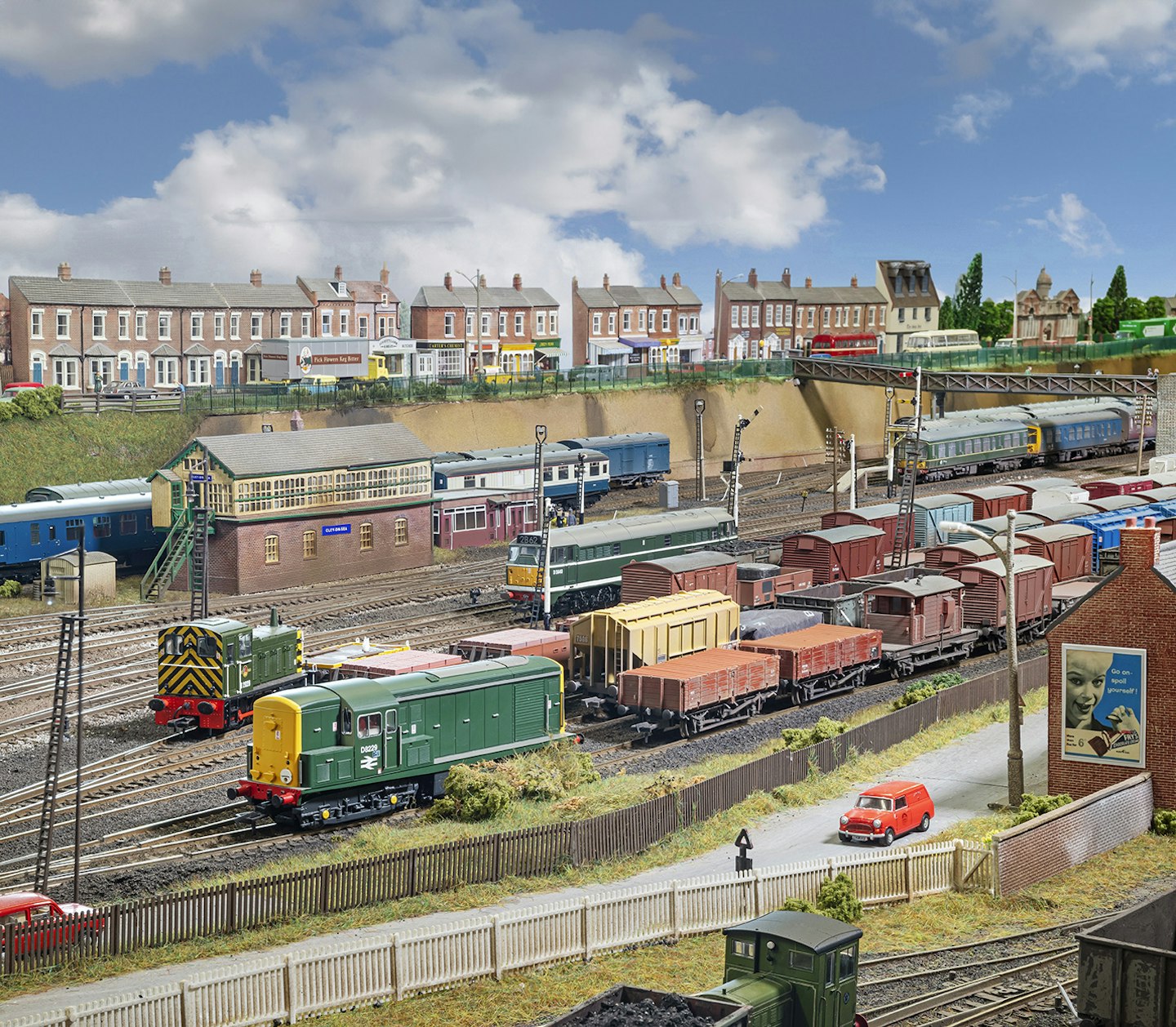
“My ‘event change’ from the past is that this silting didn’t happen, and that Cley continued to grow and become a busy holiday destination”
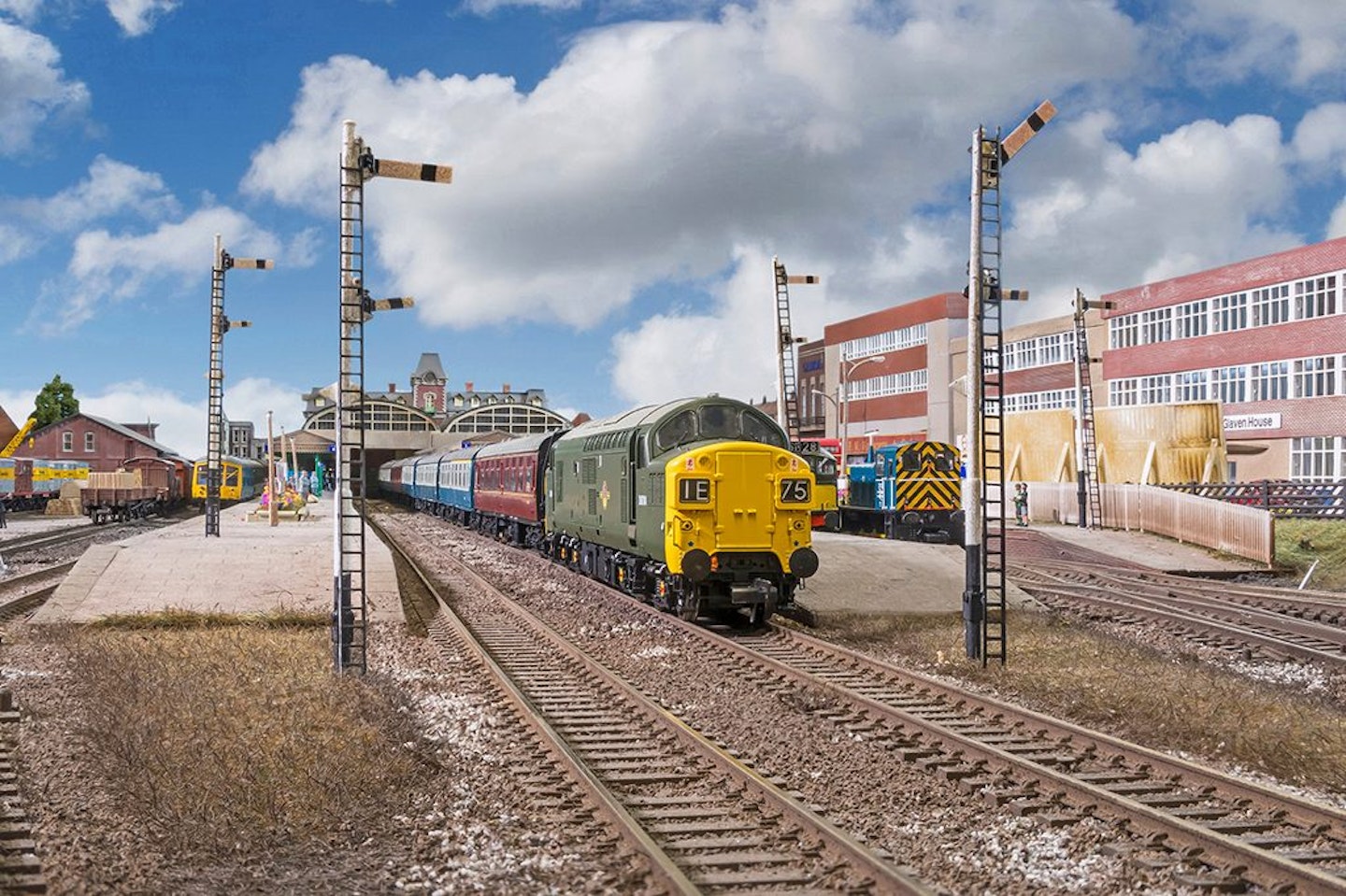
The track rises about three inches as it leaves the terminus station, giving a subtle but pleasing elevation change.
Russ splits his free time seasonally, working on his array of classic cars in the summer, before heading upstairs in the winter to work on the 200 yards of track at ‘Cley-on-Sea’.
“Construction of the layout began in 2018 with the building of 100ft of baseboards, covering in laminate flooring to ensure quiet running and allow the track to be lifted easily again if required. The track is all Peco Code 100 as I had a lot of it already from previous projects, but I did have to purchase a bit more to cover the 140 points that the layout now has. Unlike many modellers, I didn’t spend ages coming up with a track plan before I started building, my approach was to put track down and just see what looks right. A benefit of a fictitious layout! I knew I wanted a terminus station, but also the ability to run trains in a loop, a triangular junction, motive power depot, small marshalling yard, tramway and a swing bridge. It’s a good job I had a 35ft by 18ft room to put all that in. What I didn’t want was rows of sidings which looked too geometric and ended up with a big loop around the outside of the room and a triangular junction which feeds the terminus station in the middle.
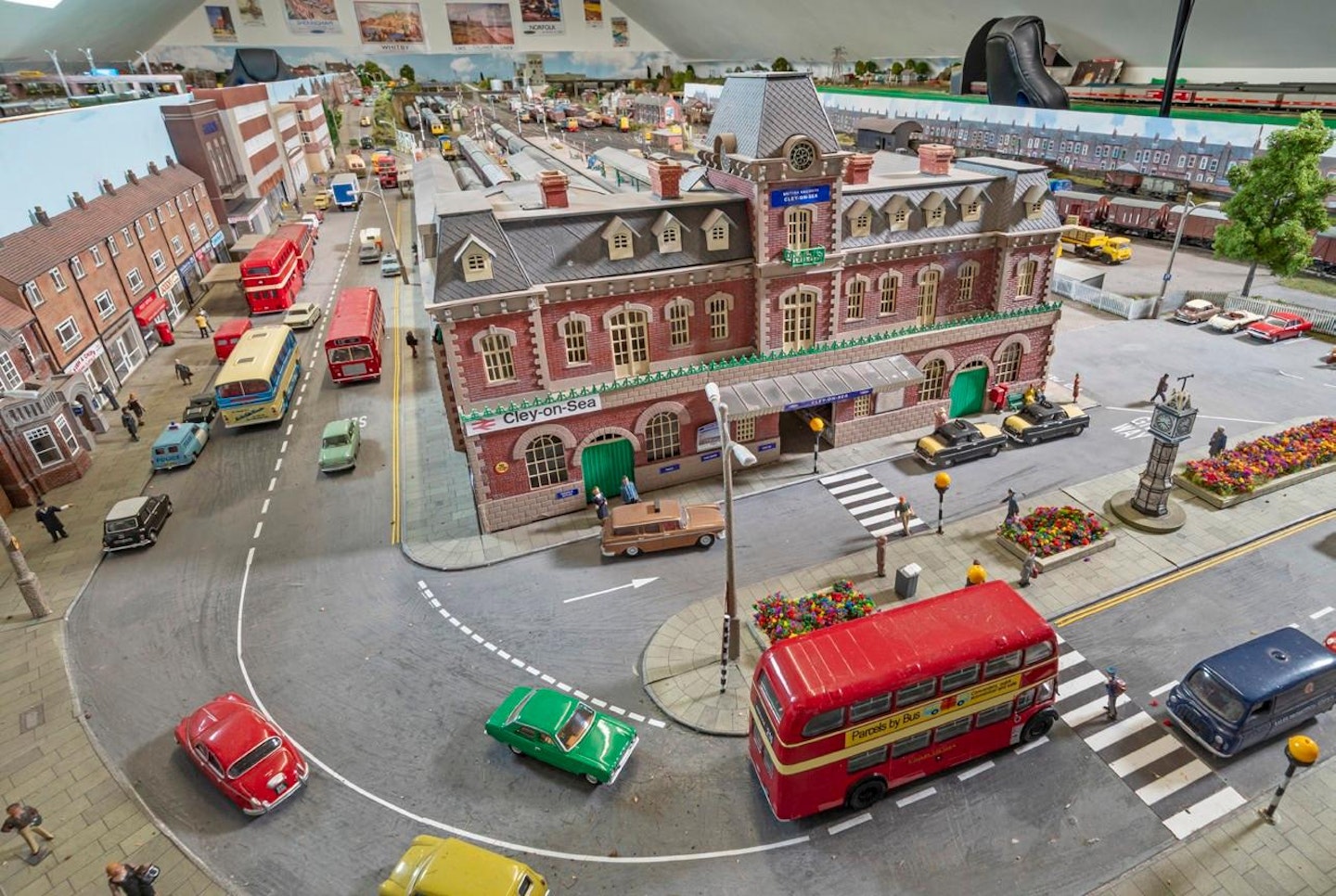

TAKING A TOUR
With ‘Cley-on-Sea’ being so large, we’ll allow Russ to take us on a tour of his creation, starting with the large terminus station.
“I’ve taken inspiration for that from Norwich, Yarmouth and Lowestoft, so it’s a real mix of areas. There are four main platforms and a bay platform with a busy street down one side, consisting of low-relief buildings, either ready-made or kits. I’ve also included some larger buildings constructed from Tri-ang Arkitex, which some older readers may remember. In the station throat there are three double slips and a scissors crossing which allows trains to reach any platform and the sidings from both main lines and on the opposite side of the station there are some smaller sidings for shunting wagons for the quayside and a coal yard.

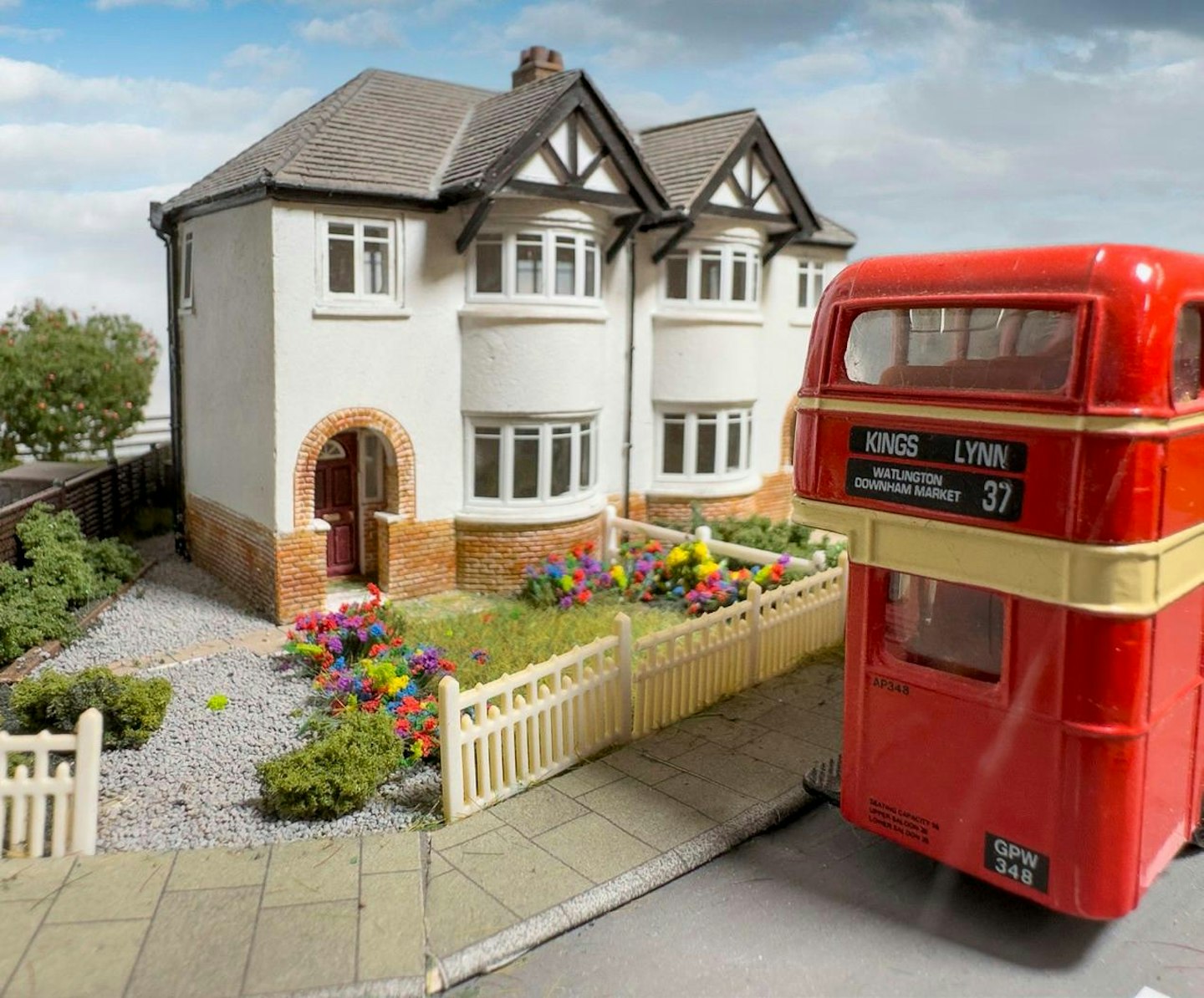
“Leaving the station and turning right you reach the village I’ve called Wiveton Quay and the Wiveton swing bridge where the railway crosses the Norfolk broads. This was laser-cut for me by Adrian from Torri Laser and given more relief with profiled plastic strip. Trains then move through the village consisting of some ready-to-plant buildings such as the pub and shop from The Model Centre, but the signature of the area is the flint cottage which I had to make from card and embossed plastic card as nothing is available on the market. Norfolk also has many large flint churches, and to replicate this I use the Metcalfe example as a base, covering it in flint plastic card. Keen not to fill the entire layout with track, I then have a section of country track in a plain setting which passes through a former station and into the non-scenic sidings above the stairs.
“At the other end of the non-scenic section trains go past Glanford Yard. This has no influence from Norfolk at all, this time taking inspiration from places such as Doncaster, with a shed, fuel storage and warehouse. From here trains can either follow tracks around to the right and into the terminus station again, or loop around the entire layout again.”

8 - Russ has painted his track with aerosols before ballasting with Woodland Scenics fine ballast. This was then coated with Pledge Klear floor polish, applied from a trigger spray, before the track was weathered with more aerosol-based paints.
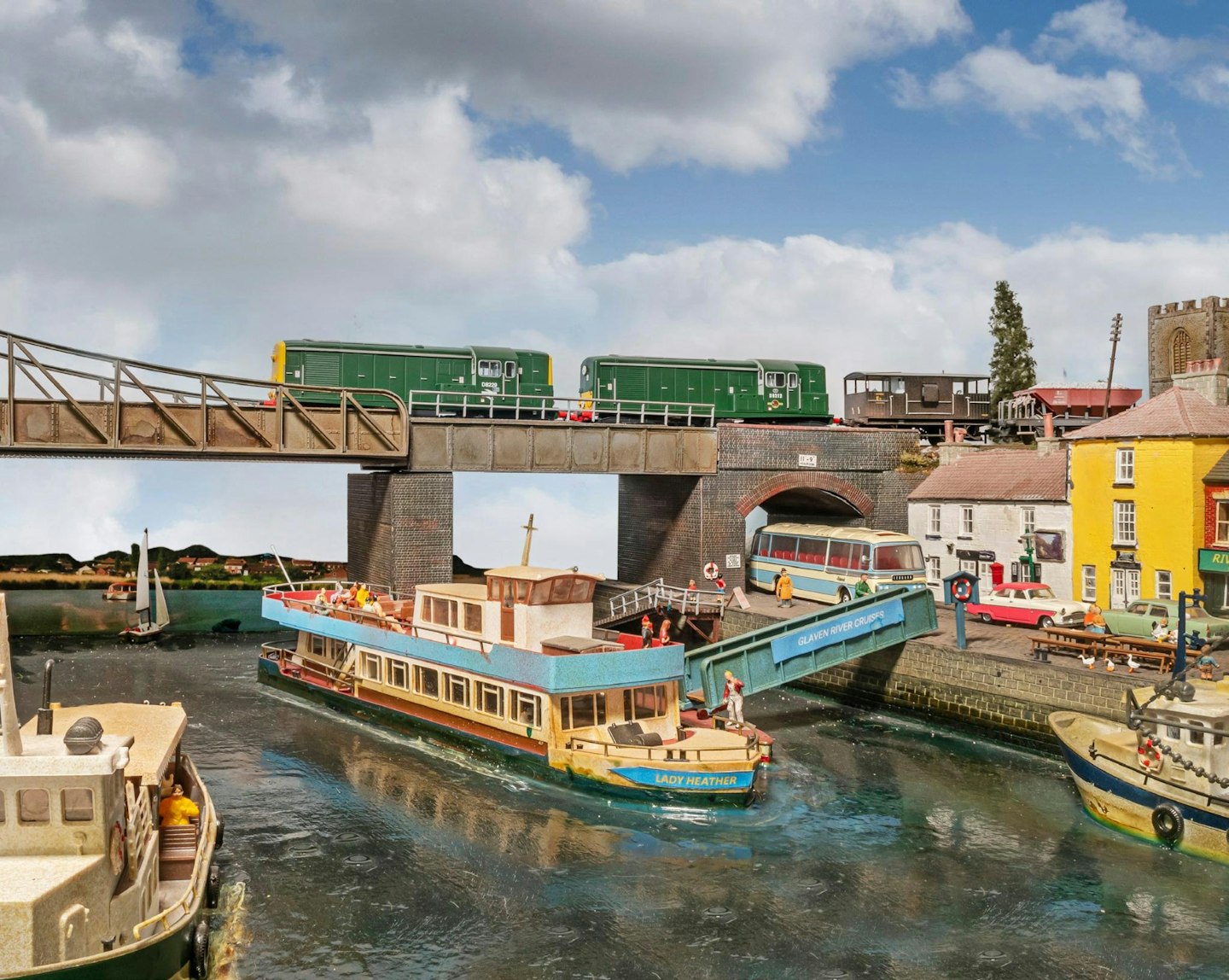
9 - The water for the Norfolk Broads has been created using Allan Downes’ method of painting the baseboard and pouring PVA on top in small layers, allowing each to dry before moving on.
AS REAL AS POSSIBLE
Despite ‘Cley-on-Sea’ being a fictitious layout, as a freight train driver, Russ still wanted to make it look as realistic as possible, from the way he operates his points to the positioning of the semaphore signals.
“With 140 points to operate, I made the decision that only those operated by a signal box would have point motors, my rationale being that in a yard points would be changed by hand, so I might as well switch the points by hand as well. The signals are from Ratio with MSE ground discs and a banner repeater. Unfortunately, my modelling skills don’t extend to being able to make operational semaphores but they are all posable to ensure they look correct for photography. My colour light signals have been wired with multiple switches in sequence so that moving one switch changes the aspects of multiple signals to the correct colour, avoiding a green signal directly before a red one. I’m quite fussy about getting the signalling right as I’ve seen so many fabulous layouts ruined by signals placed haphazardly all over the place.”

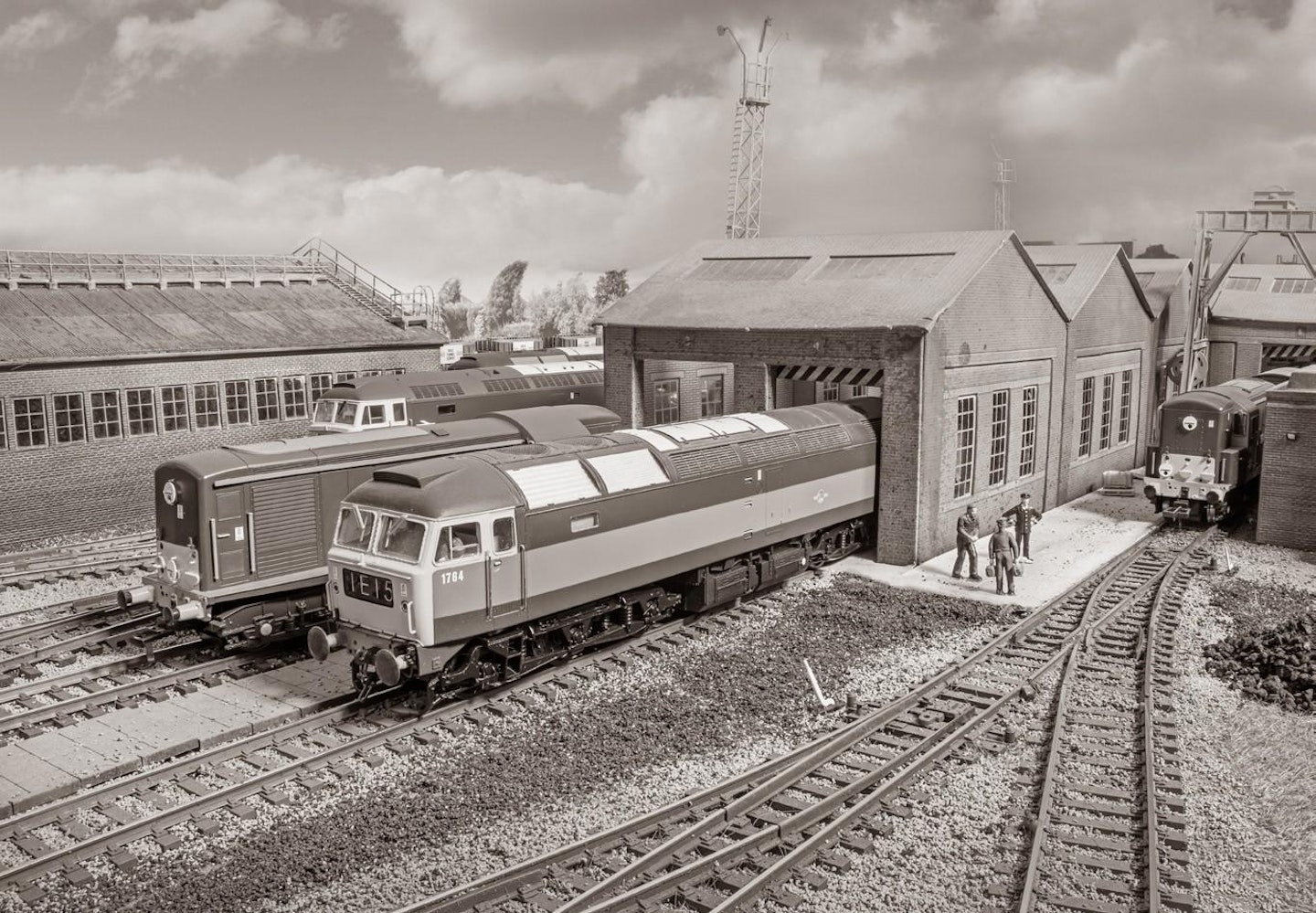
There isn’t any more room for ‘Cley-on-Sea’ to expand, but with the build complete other than the addition of a few more extra details, Russ is now ready to kick back and play trains, something he doesn’t feel he’s done enough of over the last four years.
“Most of the models are fitted with DCC sound, so I’m looking forward to sitting back and listening to them make their way through the East Anglian countryside. I’ve also been starting to film videos for YouTube so once the cars have been packed away again this winter, expect to see many more videos on my channel.”
With Russ’ layout showing what might have been had one decision not been made 300 years ago, it highlights just how many variations of layouts there could be depicting the same place had different decisions been made throughout history. The mix of alternative and true history always makes for an entertaining layout, so why not give it a try?
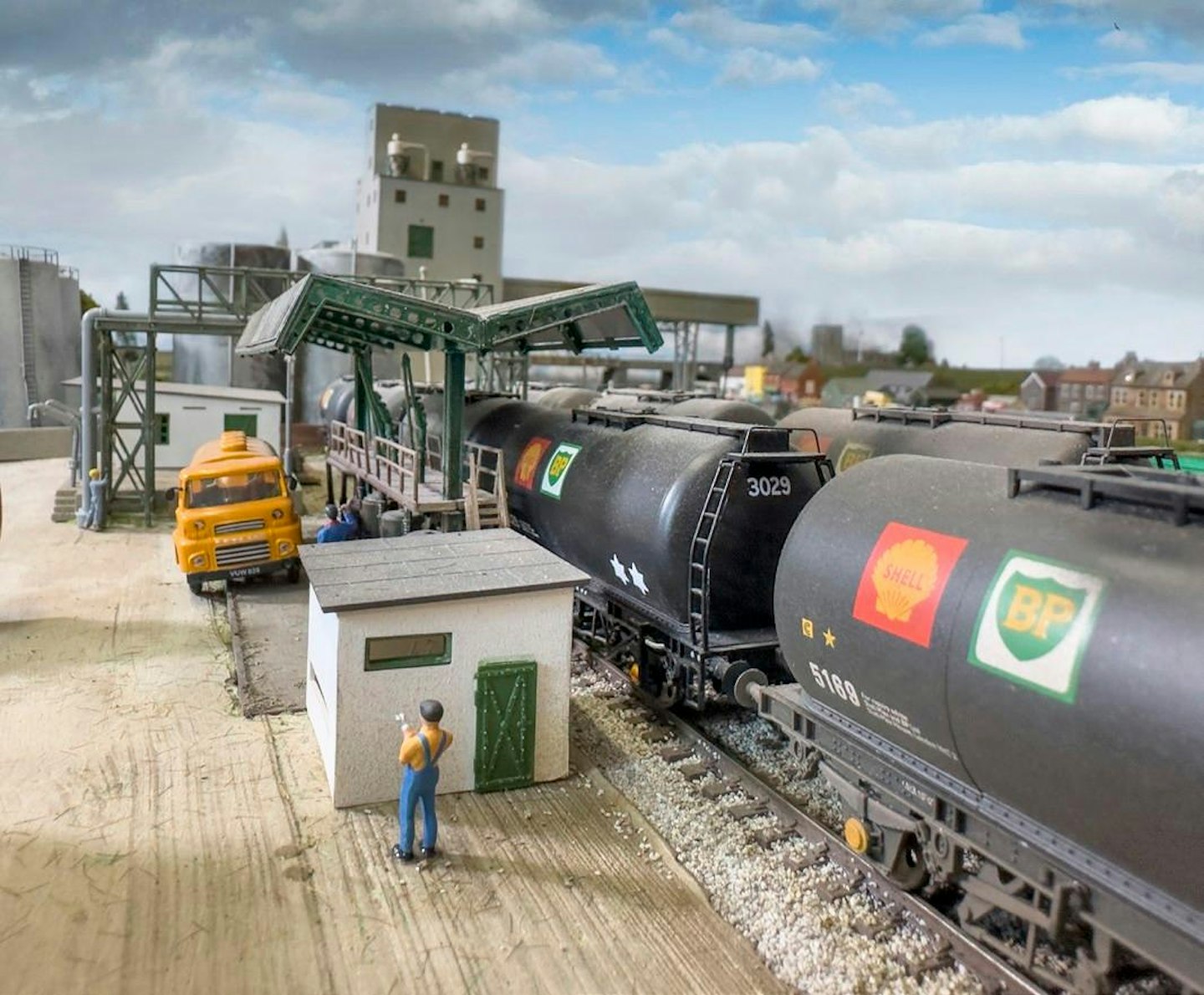
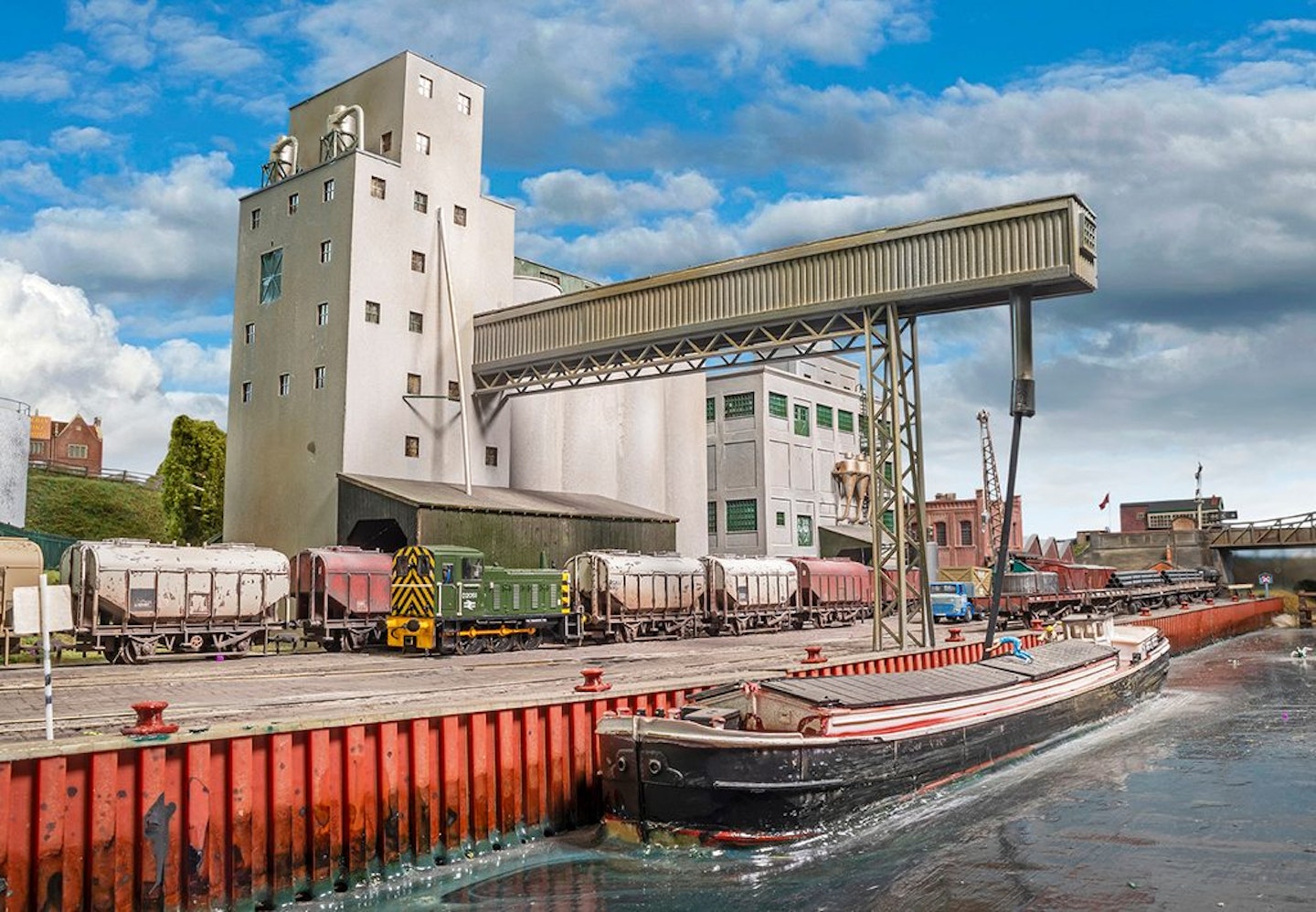
13 - Russ built ‘Cley-on-Sea’ primarily to run trains, but hasn’t considered running it to a timetable. As long as the stock is appropriate for Norfolk in 1968/69, it can run in Russ’ railway room.

14 - The road surface is poster paint with added filler and sanded to give different shades and textures throughout.
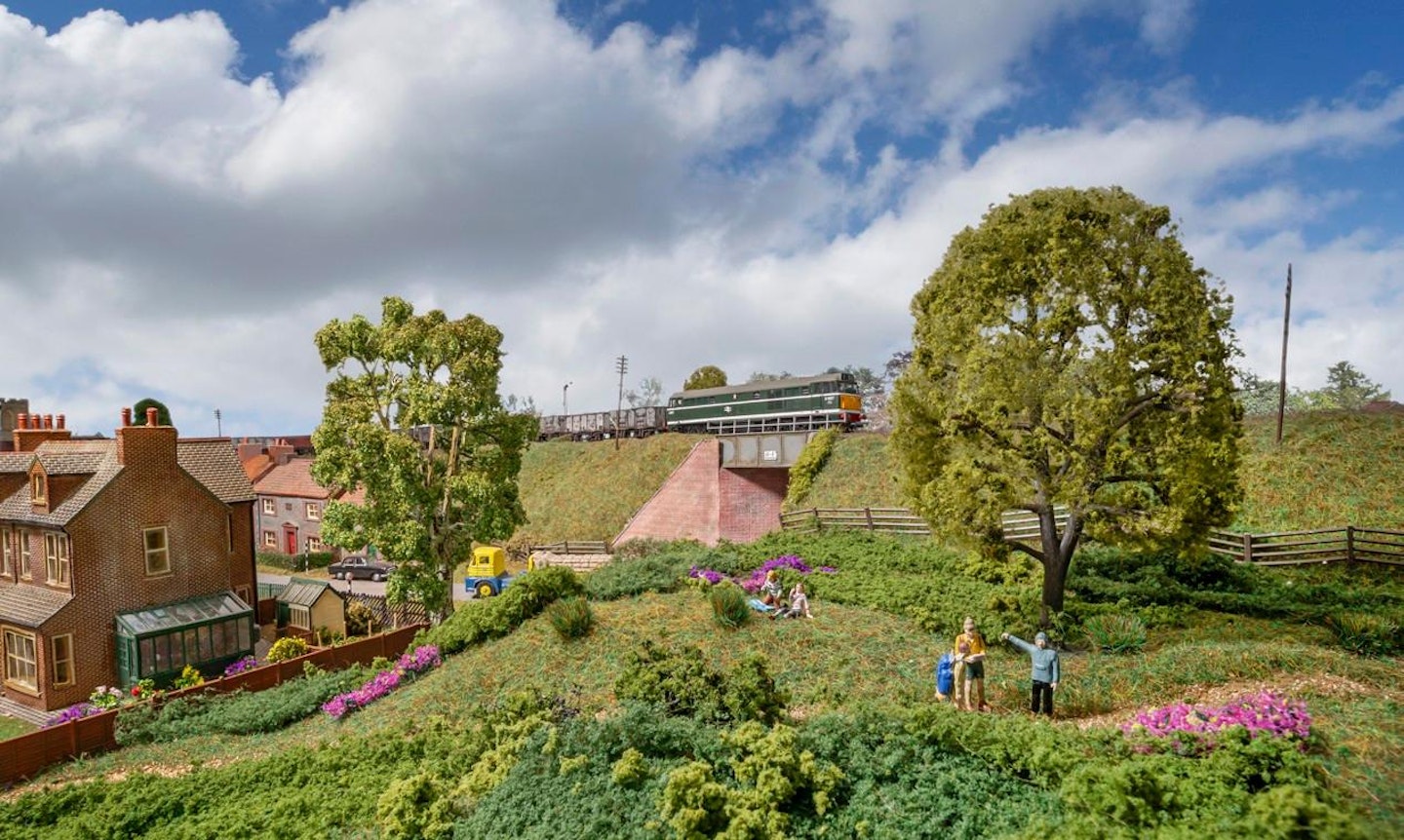

3 THINGS WE LIKE
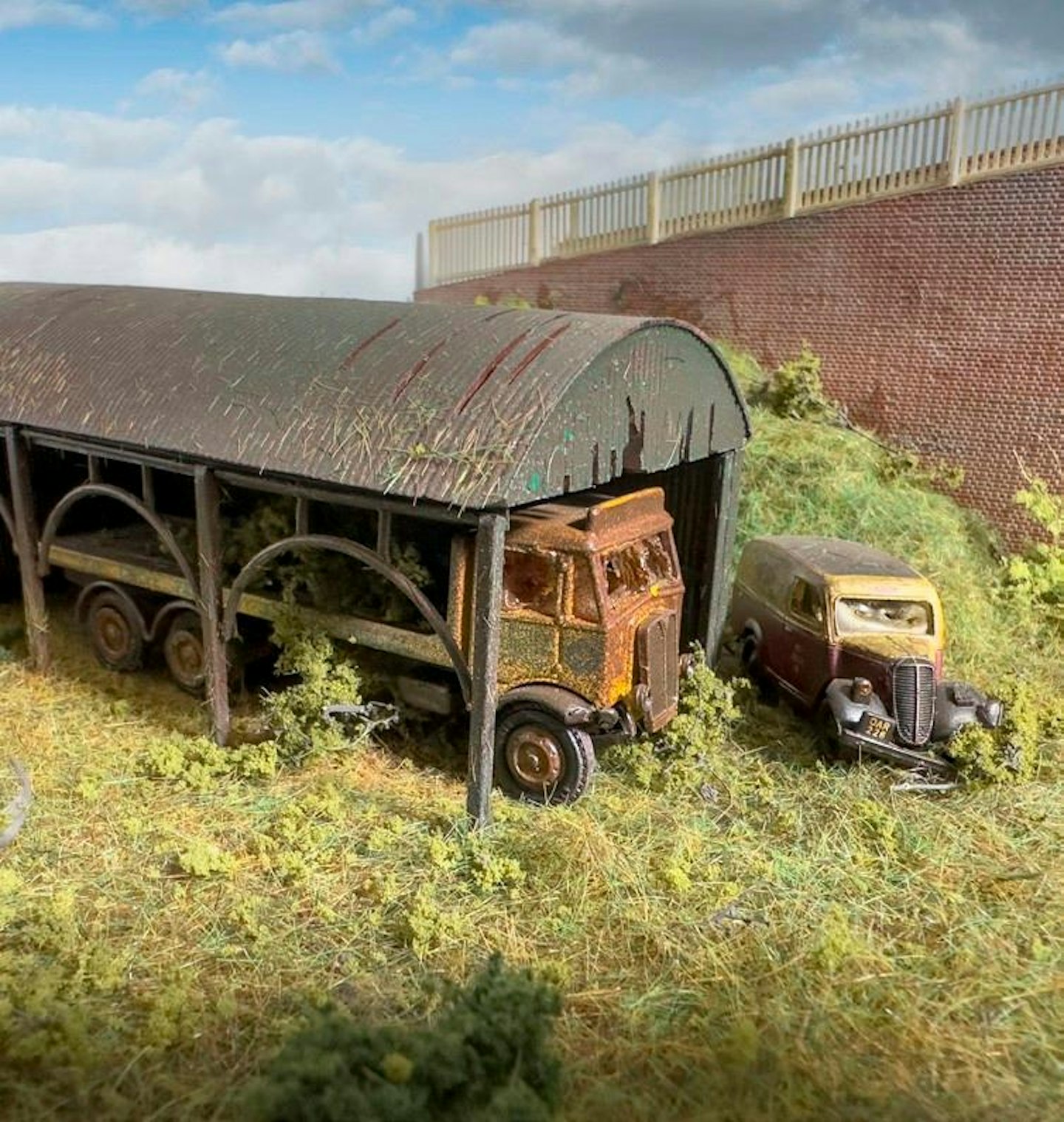
1 - Everybody loves a barn find, and these vehicles look ripe for restoration.

2 - The local coal merchants are hard at work bagging up all that fuel.
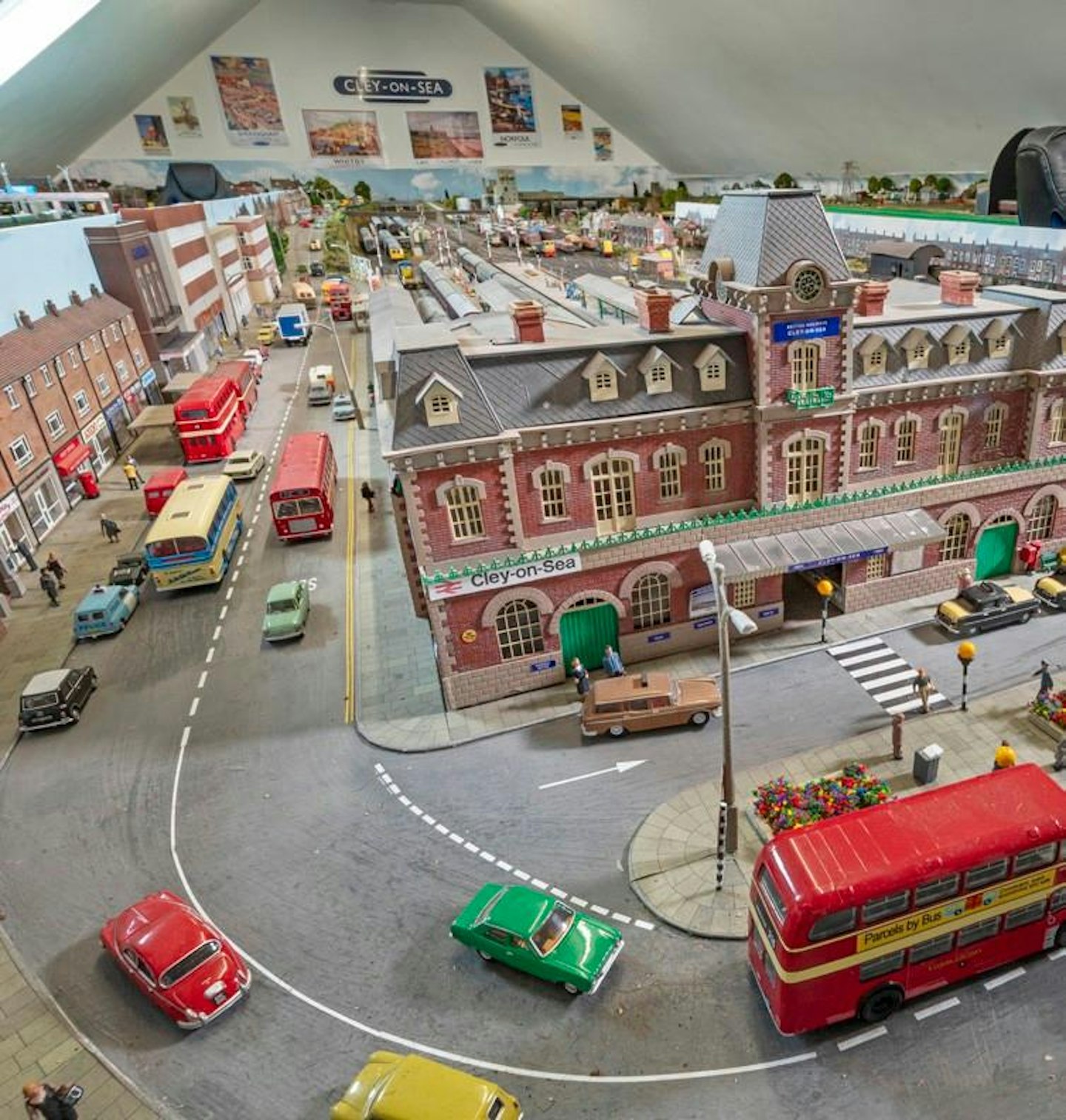
3 - The busy townscape and terminus station, with its similarity to Norwich Thorpe.
FACTFILE: ‘CLEY-ON-SEA’
-
Gauge and scale: 4mm:1ft, 16.5mm gauge, ‘OO’
-
Size: 35ft by 18ft
-
Track: Peco Code 100
-
Power and control: DCC
-
Time to build: Four years

ABOUT THE MODELLER: RUSS PIGOTT
“I’m a freight train driver and enjoying taking my collection of classic cars out for drives in the summer months. I have four MGs, including a Maestro that wins a few prizes at shows, and two Rovers.”
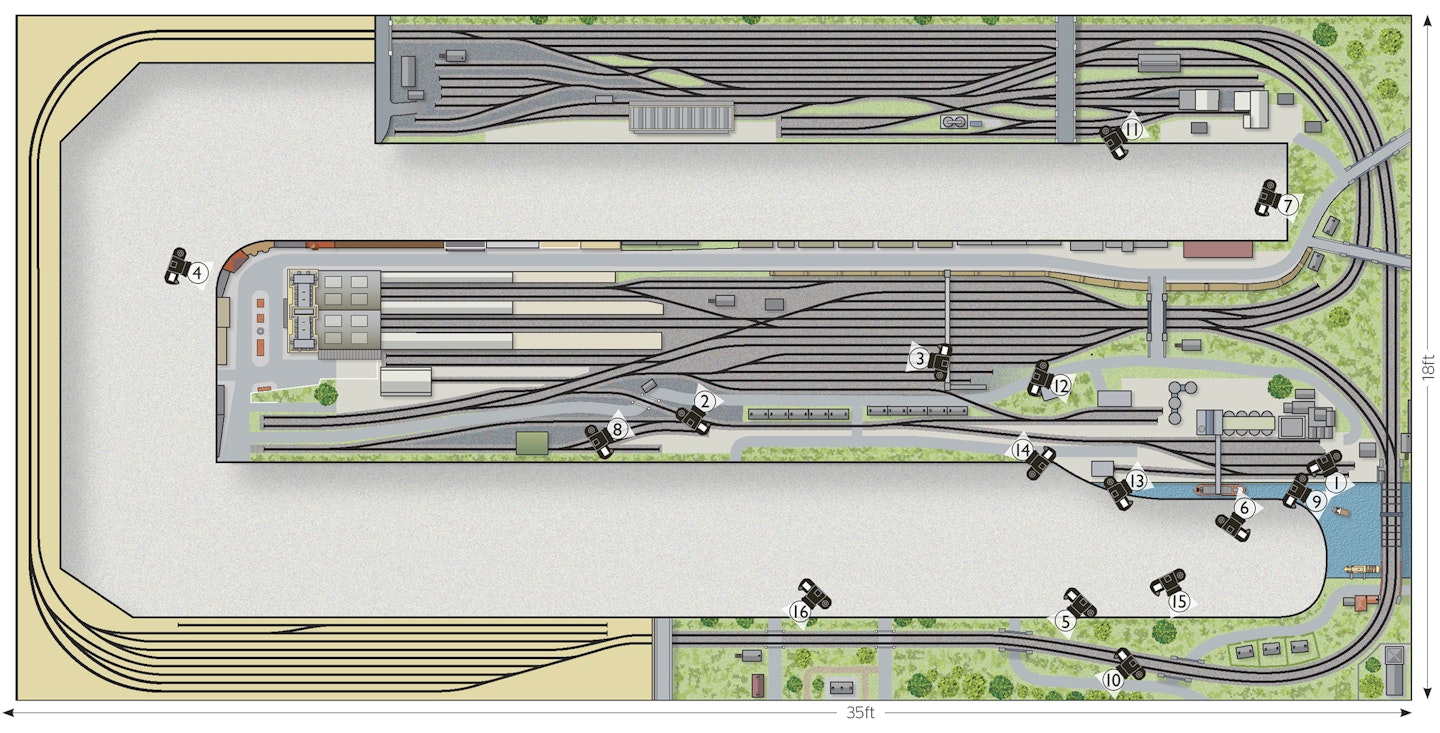
Each issue of Model Rail covers every stage of modelling, from buying your first model train set right through to museum standard fine-scale modelling. Find inspiration for your next project with our helpful tips, advice and in-depth detail on model trains and layouts.
Choose the right subscription for you and get instant digital access to the latest issue.

